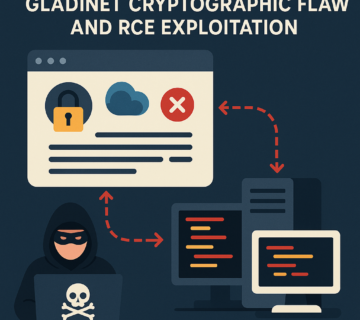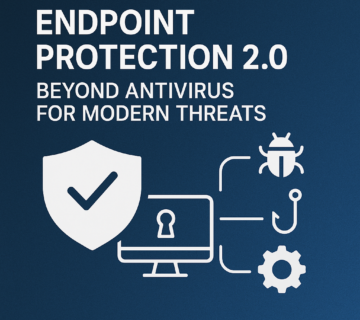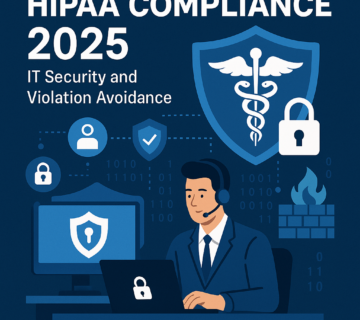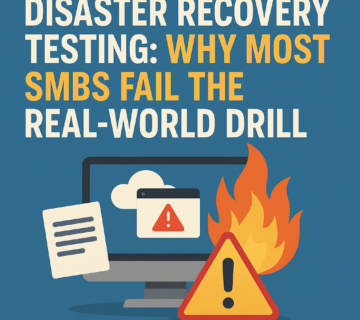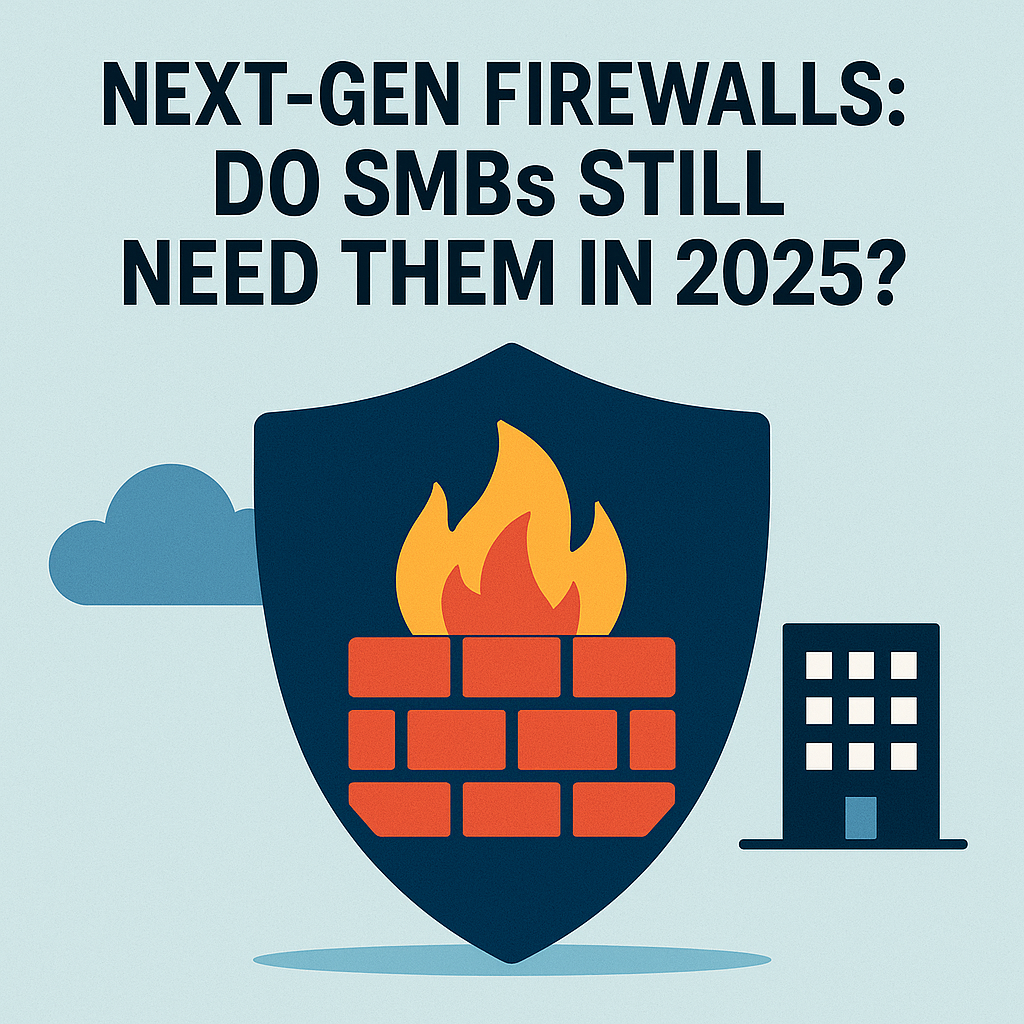How Cybercriminals Are Weaponizing Misconfigured AI Systems: A Complete Security Guide
🎙️ Dive Deeper with Our Podcast!
How Cybercriminals Are Weaponizing Misconfigured AI Systems
👉 Listen to the Episode: https://technijian.com/podcast/securing-ai-protecting-artificial-intelligence-systems/
Subscribe: Youtube | Spotify | Amazon
The artificial intelligence revolution has brought unprecedented capabilities to organizations worldwide, but it has also opened new attack vectors that cybercriminals are eagerly exploiting. Recent security research reveals a disturbing trend: threat actors are systematically targeting poorly configured AI infrastructure to launch sophisticated, automated attacks that can adapt and evolve in real-time.
The New Frontier of AI-Powered Cyber Attacks
Understanding the Threat Landscape
Modern cybercriminals have evolved beyond traditional attack methods, now leveraging the very AI tools organizations use for innovation against them. This represents a fundamental shift in the threat landscape, where attackers can harness machine learning capabilities to create dynamic, context-aware malicious payloads at an unprecedented scale.
The core vulnerability lies in the intersection of traditional security misconfigurations and AI system architectures. When organizations deploy AI infrastructure without proper security controls, they inadvertently provide attackers with powerful computational resources and intelligent content generation capabilities.
How Attackers Identify Vulnerable AI Systems
Reconnaissance Phase:
- Automated scanning tools specifically designed to detect exposed AI platforms
- Targeting common deployment patterns including:
- Unprotected Jupyter notebook instances
- Exposed TensorFlow serving endpoints
- Misconfigured cloud-based machine learning services
- Vulnerable API gateways for AI model access
Initial Access Methods:
- Exploiting weak authentication mechanisms on AI development environments
- Leveraging exposed API keys and tokens
- Taking advantage of default configurations in popular AI frameworks
- Compromising inadequately secured cloud AI services
Deep Dive: Attack Vectors and Methodologies
Prompt Injection Attacks
One of the most sophisticated techniques involves manipulating AI models through carefully crafted input prompts. Attackers inject malicious instructions that cause language models to generate harmful content, including:
- Executable malware code tailored to specific operating systems
- Social engineering content designed for targeted phishing campaigns
- Configuration files that establish persistent backdoors
- Scripts that blend with legitimate administrative activities
Infrastructure Exploitation Patterns
Linux-Based Attacks:
- Targeting containerized AI deployments
- Exploiting shared libraries through LD_PRELOAD manipulation
- Establishing persistence through cron job modifications
- Implementing reverse shell connections for remote access
Windows Environment Attacks:
- Registry manipulation for system-level persistence
- PowerShell-based payload execution
- Service installation for long-term access
- Active Directory integration for lateral movement
Model Poisoning and Long-Term Impact
Beyond immediate system compromise, these attacks can corrupt AI models themselves, creating persistent security issues:
- Training Data Corruption: Injecting malicious data that influences model behavior
- Model Backdoors: Creating hidden triggers that activate malicious functionality
- Output Manipulation: Causing models to generate harmful content in normal operation
- Persistent Compromise: Ensuring continued access through poisoned AI systems
Advanced Detection and Prevention Strategies
Infrastructure Security Hardening
Access Control Implementation:
- Deploy robust authentication mechanisms for all AI infrastructure components
- Implement role-based access control (RBAC) for AI development environments
- Regular audit and rotation of API keys and authentication tokens
- Network segmentation to isolate AI systems from critical infrastructure
Monitoring and Detection:
- Establish baseline computational resource usage patterns
- Monitor for unusual network communications from AI systems
- Track API usage anomalies and unauthorized access attempts
- Implement real-time alerting for suspicious AI model interactions
AI-Specific Security Measures
Model Protection:
- Regular integrity checks for AI models and training data
- Version control and rollback capabilities for compromised models
- Sandboxed environments for AI model testing and validation
- Continuous monitoring of model outputs for anomalous behavior
Prompt Safety:
- Input validation and sanitization for all AI interactions
- Rate limiting to prevent automated prompt injection attacks
- Content filtering to detect and block malicious prompt patterns
- User authentication and authorization for AI model access
Industry Response and Best Practices
Enterprise Security Frameworks
Leading organizations are developing comprehensive AI security frameworks that address:
- Governance: Establishing clear policies for AI deployment and management
- Risk Assessment: Regular evaluation of AI infrastructure security posture
- Incident Response: Specialized procedures for AI-related security incidents
- Training: Education programs for development teams on AI security risks
Regulatory Considerations
As AI attacks become more prevalent, regulatory bodies are beginning to address AI security requirements:
- Enhanced disclosure requirements for AI-related security incidents
- Mandatory security assessments for AI systems handling sensitive data
- Industry-specific guidelines for AI deployment in critical sectors
- International cooperation frameworks for AI threat intelligence sharing
Frequently Asked Questions (FAQ)
Q1: How can I tell if my AI systems have been compromised?
Answer: Look for these warning signs:
- Unusual spikes in computational resource usage
- Unexpected network communications from AI systems
- Anomalous API access patterns or failed authentication attempts
- AI models producing unexpected or suspicious outputs
- Presence of unauthorized files or processes on AI infrastructure
Q2: What makes AI-powered attacks more dangerous than traditional cyber attacks?
Answer: AI-powered attacks are particularly dangerous because they can:
- Generate contextually appropriate malicious content automatically
- Adapt and evolve their tactics in real-time
- Scale attacks across multiple targets simultaneously
- Create highly convincing social engineering materials
- Establish persistent access through model corruption
Q3: Which AI platforms are most commonly targeted by attackers?
Answer: Attackers frequently target:
- Jupyter notebook environments with default configurations
- Cloud-based AI services (AWS SageMaker, Google AI Platform, Azure ML)
- TensorFlow serving instances without proper authentication
- MLflow tracking servers with exposed interfaces
- Docker containers running AI workloads with weak security
Q4: How should organizations prioritize their AI security investments?
Answer: Focus on these key areas in order of priority:
- Access Control: Implement strong authentication and authorization
- Network Security: Segment AI infrastructure and monitor communications
- Data Protection: Secure training data and model artifacts
- Monitoring: Deploy AI-specific security monitoring tools
- Incident Response: Develop AI-focused incident response procedures
Q5: Can traditional security tools detect AI-based attacks?
Answer: Traditional security tools have limitations in detecting AI-based attacks because:
- Generated payloads may not match known malware signatures
- Attack patterns can be highly dynamic and context-specific
- AI-generated content can appear legitimate to conventional analysis
- Organizations need specialized AI security tools alongside traditional solutions
Q6: What should I do if I suspect my AI models have been compromised?
Answer: Take these immediate steps:
- Isolate affected AI systems from production environments
- Document all suspicious activities and preserve evidence
- Assess the scope of potential model corruption
- Restore from known-good backups if available
- Review access logs and authentication records
- Update security configurations before bringing systems back online
Q7: How often should AI security assessments be conducted?
Answer: Implement a tiered assessment schedule:
- Daily: Automated monitoring and anomaly detection
- Weekly: Review of access logs and authentication events
- Monthly: Comprehensive security configuration reviews
- Quarterly: Penetration testing and vulnerability assessments
- Annually: Full security architecture reviews and policy updates
Q8: What are the legal implications of AI security breaches?
Answer: Legal implications may include:
- Regulatory fines under data protection laws (GDPR, CCPA)
- Liability for damages caused by compromised AI systems
- Disclosure requirements for publicly traded companies
- Industry-specific compliance violations
- Potential lawsuits from affected customers or partners
How Technijian Can Protect Your Organization
At Technijian, we understand the critical importance of securing AI infrastructure in today’s threat landscape. Our comprehensive AI security services are designed to protect your organization from emerging threats while enabling innovation.
Our AI Security Solutions
Security Assessment and Audit Services:
- Complete evaluation of your current AI infrastructure security posture
- Identification of misconfigurations and vulnerable endpoints
- Comprehensive risk assessment with prioritized remediation recommendations
- Compliance verification against industry standards and regulations
AI Infrastructure Hardening:
- Implementation of robust access controls and authentication mechanisms
- Network segmentation and monitoring solutions specifically designed for AI environments
- Deployment of AI-specific security monitoring and alerting systems
- Configuration of secure development and deployment pipelines
Incident Response and Recovery:
- 24/7 monitoring and rapid response capabilities for AI security incidents
- Specialized forensic analysis for AI-related breaches
- Model integrity restoration and validation services
- Business continuity planning for AI-dependent operations
Training and Awareness Programs:
- Comprehensive security training for AI development teams
- Executive briefings on AI security risks and mitigation strategies
- Regular security awareness updates on emerging AI threats
- Hands-on workshops for secure AI development practices
Why Choose Technijian?
Expertise: Our team combines deep cybersecurity knowledge with specialized AI security expertise, ensuring comprehensive protection for your AI initiatives.
Proactive Approach: We don’t just respond to threats – we anticipate them, implementing preventive measures that keep your AI systems secure before attacks occur.
Customized Solutions: Every organization has unique AI security needs. We develop tailored security strategies that align with your specific infrastructure, compliance requirements, and business objectives.
Continuous Support: AI security is an ongoing challenge that requires constant vigilance. Our support team provides continuous monitoring, regular assessments, and timely updates to keep your defenses current.
Get Started Today
Don’t wait for a security incident to expose vulnerabilities in your AI infrastructure. Contact Technijian today to schedule a comprehensive AI security assessment and take the first step toward robust protection.
Contact Information:
- Email: sales@technijian.com
- Phone:(949)-379-8500
- Website: www.technijian.com/ai-security
- Emergency Response Hotline: Available 24/7 for critical security incidents
Protect your AI investments, secure your data, and maintain customer trust with Technijian’s expert AI security services. Your organization’s digital future depends on the security decisions you make today.
This article provides general information about AI security threats and should not be considered as specific security advice for your organization. For personalized security recommendations, consult with qualified cybersecurity professionals.
About Technijian
Technijian is a premier managed IT services provider, committed to delivering innovative technology solutions that empower businesses across Southern California. Headquartered in Irvine, we offer robust IT support and comprehensive managed IT services tailored to meet the unique needs of organizations of all sizes. Our expertise spans key cities like Aliso Viejo, Anaheim, Brea, Buena Park, Costa Mesa, Cypress, Dana Point, Fountain Valley, Fullerton, Garden Grove, and many more. Our focus is on creating secure, scalable, and streamlined IT environments that drive operational success.
As a trusted IT partner, we prioritize aligning technology with business objectives through personalized IT consulting services. Our extensive expertise covers IT infrastructure management, IT outsourcing, and proactive cybersecurity solutions. From managed IT services in Anaheim to dynamic IT support in Laguna Beach, Mission Viejo, and San Clemente, we work tirelessly to ensure our clients can focus on business growth while we manage their technology needs efficiently.
At Technijian, we provide a suite of flexible IT solutions designed to enhance performance, protect sensitive data, and strengthen cybersecurity. Our services include cloud computing, network management, IT systems management, and disaster recovery planning. We extend our dedicated support across Orange, Rancho Santa Margarita, Santa Ana, and Westminster, ensuring businesses stay adaptable and future-ready in a rapidly evolving digital landscape.
Our proactive approach to IT management also includes help desk support, cybersecurity services, and customized IT consulting for a wide range of industries. We proudly serve businesses in Laguna Hills, Newport Beach, Tustin, Huntington Beach, and Yorba Linda. Our expertise in IT infrastructure services, cloud solutions, and system management makes us the go-to technology partner for businesses seeking reliability and growth.
Partnering with Technijian means gaining a strategic ally dedicated to optimizing your IT infrastructure. Experience the Technijian Advantage with our innovative IT support services, expert IT consulting, and reliable managed IT services in Irvine. We proudly serve clients across Irvine, Orange County, and the wider Southern California region, helping businesses stay secure, efficient, and competitive in today’s digital-first world.
